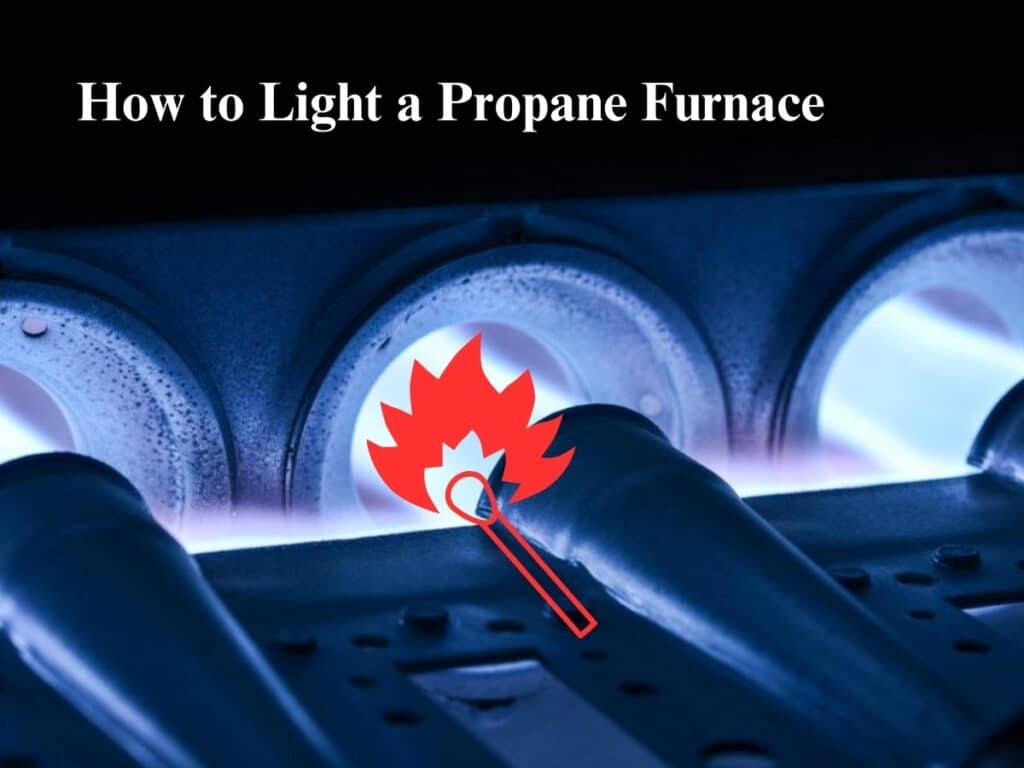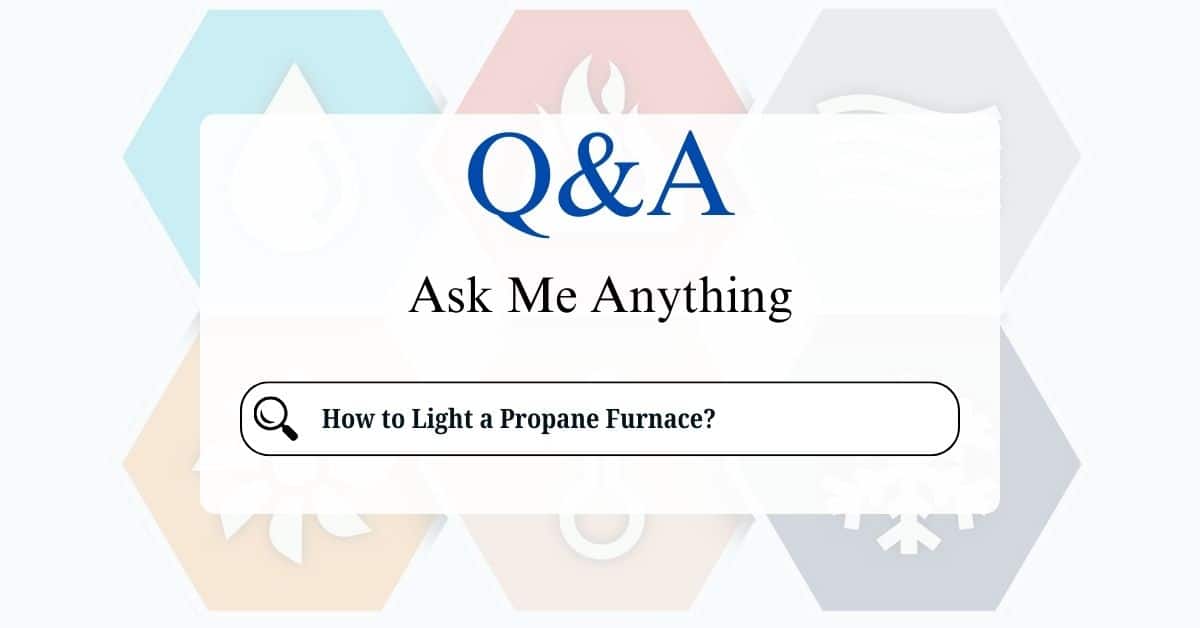Propane furnaces are a reliable way to keep your home warm and cozy during the colder months. While modern furnaces often have automatic ignition systems, some older models may require manual lighting. This friendly guide will explain how to safely light a propane furnace that has a pilot light or standing pilot, and also cover what to do if you have a newer furnace with electronic ignition that isn’t working.
Important Safety First!
Before attempting to light any propane appliance, it’s crucial to prioritize safety:
- Smell for Gas: If you smell a strong odor of propane (a rotten egg smell), do not attempt to light the furnace. Immediately turn off the gas supply at the propane tank and contact your propane supplier or a qualified HVAC technician.
- Ventilate the Area: If you smell a faint odor of gas, open windows and doors to ventilate the area before attempting to light the furnace.
- Follow Manufacturer’s Instructions: Always consult your furnace’s owner’s manual for specific instructions. The steps outlined here are general guidelines, but your furnace may have unique requirements.
- If You’re Unsure, Call a Professional: If you’re not comfortable lighting the furnace yourself, or if you encounter any difficulties, contact a qualified HVAC technician or your propane supplier.
Two Main Types of Propane Furnaces:
- Standing Pilot (Older Models): These furnaces have a small, constantly burning flame called a pilot light.
- Electronic Ignition (Modern Models): These furnaces use an electronic spark to ignite the burners, eliminating the need for a standing pilot.

How to Light a Propane Furnace with a Standing Pilot
- Locate the Pilot Light Assembly: This is usually located near the main burner assembly, often behind a small access panel.
- Locate the Gas Valve: Find the gas valve, which has settings for “On,” “Off,” and “Pilot.”
- Turn the Gas Valve to “Off”: Turn the gas valve to the “Off” position and wait for at least five minutes to allow any accumulated gas to dissipate. This is a crucial safety step.
- Turn the Gas Valve to “Pilot”: Turn the gas valve to the “Pilot” position.
- Press and Hold the Pilot Button: While holding a lit match or lighter to the pilot opening, press and hold the pilot button or knob. You should hear a hissing sound of gas flowing.
- Maintain the Flame and Hold the Button: Continue holding the pilot button for about 30-60 seconds after the pilot light ignites. This allows the thermocouple (a safety device) to heat up and keep the gas valve open.
- Release the Pilot Button: After 30-60 seconds, carefully release the pilot button. The pilot light should remain lit. If it goes out, repeat steps 3-6.
- Turn the Gas Valve to “On”: Once the pilot light is steadily burning, turn the gas valve to the “On” position. The main burners should ignite, and your furnace should begin heating.
What to Do If the Pilot Light Won’t Stay Lit
- Check the Thermocouple: A faulty thermocouple is a common reason why a pilot light won’t stay lit. This is a small metal rod that senses the pilot flame and keeps the gas valve open. If it’s dirty or damaged, it won’t work correctly. This is usually a job for a professional.
- Check for Drafts: Strong drafts can blow out the pilot light. Make sure there are no open windows or doors near the furnace.
- Check the Gas Supply: Ensure there is propane in your tank and that the gas supply valve at the tank is open.
What to Do If You Have an Electronic Ignition Furnace and It’s Not Working
If your furnace has electronic ignition and it’s not working after a power outage or for other reasons, do not attempt to manually light it. Here are some troubleshooting steps:
- Check the Thermostat: Make sure the thermostat is set to “Heat” and the temperature is set higher than the current room temperature.
- Check the Circuit Breaker: Ensure the circuit breaker for the furnace hasn’t tripped.
- Check the Gas Supply: Ensure there is propane in your tank and that the gas supply valve at the tank is open.
- Check the Flame Sensor (If Accessible): Some furnaces have a flame sensor that detects the presence of a flame. If this sensor is dirty, it can prevent the furnace from operating. This is usually a job for a professional, however, sometimes you may be able to carefully clean it with very fine steel wool or a Scotch-Brite pad.
- Call a Professional: If you’ve checked these things and the furnace still isn’t working, contact a qualified HVAC technician. There may be a problem with the ignition system, control board, or other components.
By following these guidelines, you can safely light your propane furnace and keep your home warm throughout the winter. Remember, when in doubt, call a professional.






